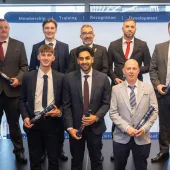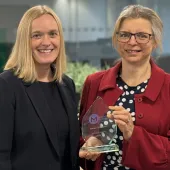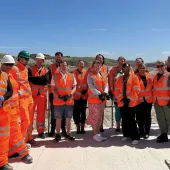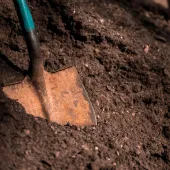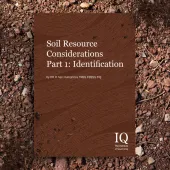Institute of Quarrying - Post-war Developments
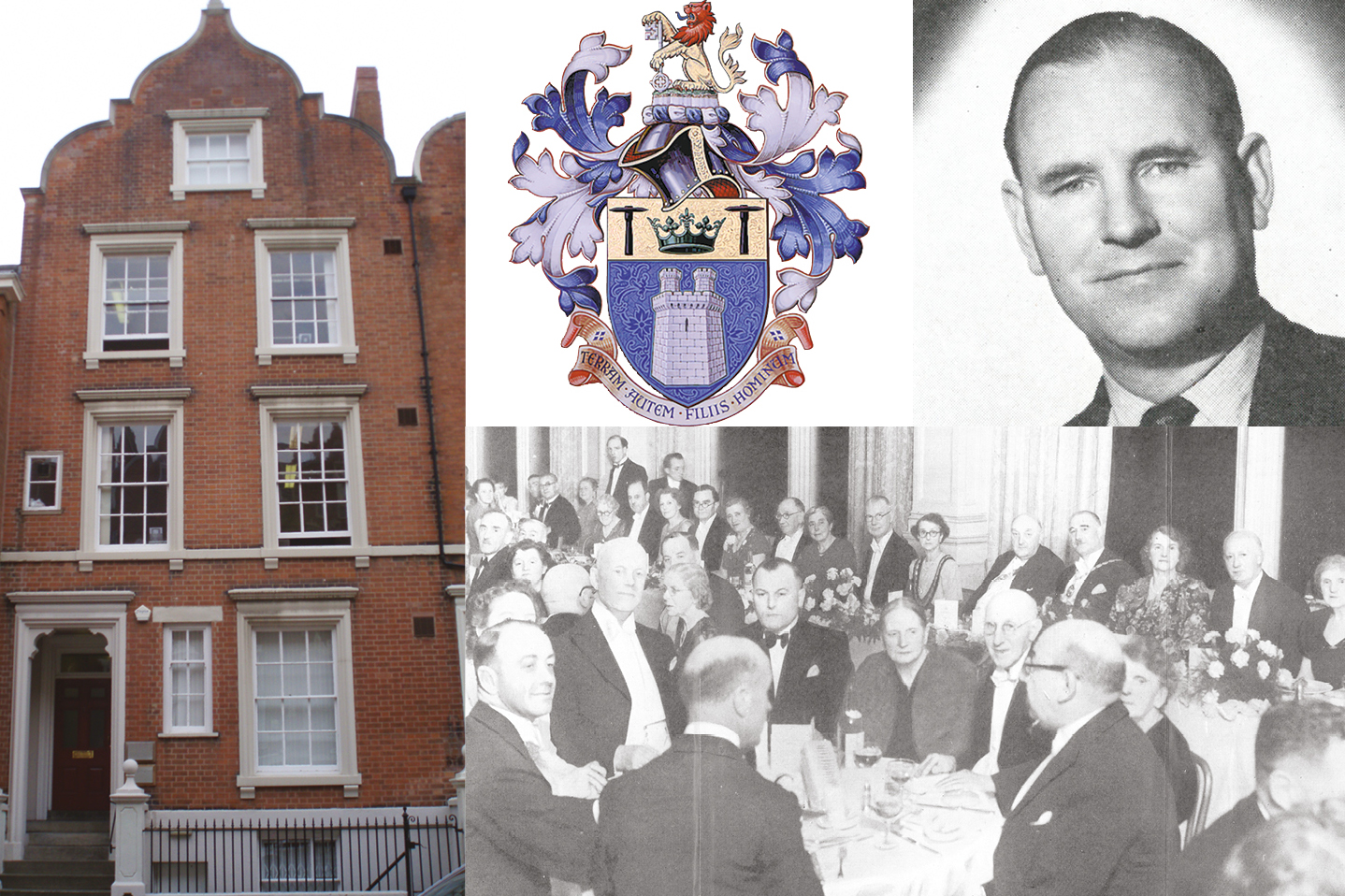
First published in the October 2017 issue of Quarry Management
Second part of a special supplement by Quarry Management to celebrate IQ's centenary
In 1947 Simon McPherson’s son John was engaged as Assistant Secretary and, in the same year, the designatory letters MIQ, FIQ etc were adopted. By this time the work on the examination syllabus had been completed and in 1948 the first ‘Preliminary Examinations’, as they were called, were held covering the following subjects: Electrical Engineering, Quarry Operations, Quarry Engineering, and Surveying and Geology. As teaching facilities did not exist until much later, the course was one of private study with the aid of textbooks lent by headquarters.
Unfortunately, all this educational effort was not sufficient to impress the Privy Council which refused the Institute’s application for a Royal Charter on the grounds that an insufficient proportion of the corporate membership was professionally qualified. Following this disappointment it was decided that the time had come for the Institute to start thinking about ‘putting its house in order’ by forming itself into a limited liability company.
On the membership front, the Institute was now well established in all parts of the UK and by this time small groups of members had also developed in some of the Commonwealth countries. The first organized activity outside the UK took place in Sydney in 1948 with the inaugural meeting of the Australian branch, with Harry Griffiths in the chair.
In the first five years development here was slow until meetings became established on a regular basis around 1953. In 1961 the branch was formed into a Division with branches in New South Wales, Victoria, South Australia and Queensland. Michael Farley was the first Divisional President and in 1969 Harold Wenham Robinson became the first President of the Institute to be based outside the UK.
In 1955 the first of the short courses in Quarrying Practice was held at Ashorne Hill, the conference centre of the Iron and Steel Corporation at Leamington Spa. It proved to be a great success and, in due course, was moved to Nottingham University where it was a regular feature in the Institute’s education calendar for many years until it was superseded by more subject-specific forms of training.
Towards the end of 1957, when he was still in office, the Institute’s founder and guiding spirit Simon McPherson died at the age of 80. In 1958 his son John succeeded him as General Secretary of IQ and managing director of the Journal company. John McPherson, ‘young Mac’, had trained as a journalist and taken over as editor of the Quarry Manager’s Journal and its sister publication Cement, Lime and Gravel on his return to the business from wartime service with the London Scottish Regiment.
In the same year the long-awaited incorporation took place when the Institute became a company limited by guarantee, but with a special dispensation from the Board of Trade to drop ‘Limited’ from its title. Also, new bye-laws were adopted requiring every applicant for corporate membership to be qualified by examination. IQ still retains this legal status but has the additional benefit of being a registered charity, which, among other things, provides an exception from corporation tax.
In 1958 the Coat of Arms was adopted. Designed at the College of Arms in London (part of the Royal Household) by the ‘Richmond Herald’, Anthony R. Wagner, the arms themselves were a gift from the outgoing President, Hugh Symington of the Springbank Quarry Company, to mark the incorporation of the Institute as a limited liability company.
The ‘armorial bearings’ are meant to symbolize the origin, aims and scope of the Institute, and the three heraldic components of the coat of arms are the shield, the crest and the motto.
The shield consists of two ‘jads’, or hammers, representing the ancient tools of the trade, and the coronet between them is adorned with wattle flowers (left, centre and right), to acknowledge the section in Australia, with trefoils in-between for Wales. On top of the shield is the crest in the form of a quarry face with green-topped overburden surmounted by a lion to represent the Scottish branch, and in its paws is a key symbolizing knowledge and freedom.
The octagonal stone tower with two turrets represents the castle at Caernarfon, the Institute’s birthplace, where the designer’s inspiration was clearly drawn from the Eagle Tower that overlooks the Menai Strait on the western flank of the castle. This castle was built by Edward I with work commencing in 1283 under the supervision of James of St George, the master mason and military engineer who was responsible for both the selection and extraction of the stone, which was needed in large quantities as the castle walls are 7–9ft thick.
He was certainly a good judge of stone because, instead of using the local material, he had high-quality granite shipped across the Menai Strait from the Isle of Anglesey. Thus, it is interesting to reflect on the fact that one of the UK’s first great quarry masters inadvertently contributed to the design of the Institute’s Coat of Arms.
The motto ‘Terram Autem Filiis Hominum’ is a Latin translation of a passage taken from Psalm 115, ‘The earth he hath given to the children of men’, and it originated from a competition promoted in the Journal to find a suitable motto for the Institute. The original patent of arms is kept on display at the Institute’s Nottingham office and, following the creation of affiliated status for overseas sections in 1996, the Coat of Arms itself was registered as a trademark both in the UK and in the other countries where IQ operates.
More recently, the use of a modern ‘IQ’ graphic logo has been adopted for promotional purposes, which is similar in concept to the IQ car badge that was popular with members in the 1950s and 60s.
In 1960, less than three years after the death of his father, John McPherson also died. Mary Roberts, who had been personal secretary to Simon McPherson since she left school in 1934, succeeded him as Secretary. Mary liked to describe herself as a ‘third-generation quarryman’, as her grandfather had started the Clee Hill Granite Company in Shropshire and her father had been one of the earliest members of the Institute and was Chairman in 1933.
Although Mary was an experienced administrator, it was recognized that both IQ and QMJ needed a member of the permanent staff with a technical background and, therefore, the following year, Brian Fish, a mining engineer who had worked for Nobel’s Explosives and the National Coal Board, joined in a dual role as technical officer for IQ and editor of the Journal.
Five years later he became the director of both organizations, a position he was to hold until his retirement in December 1984. During this period IQ moved on from its social origins and considerable progress was made in the field of education, coupled with a substantial growth in overseas membership.
The flexibility of home-based learning made the course accessible to anyone seeking to enhance their career prospects, and periodic weekend tutorials took place at college so that students could get face-to-face help and support from staff members. This process was highly successful in getting large numbers of operational managers up to the recognized academic standard of the IQ Professional Examination and additional courses were subsequently developed to cover asphalt and, to a lesser extent, ready-mixed concrete.
In 1974 an arrangement was made with the Mining Department of Leeds University whereby successful Diploma students could take an extra year to obtain a degree in Quarrying.
In 1965 Brian Fish made the first of his overseas tours. His visit to New Zealand, where there were only seven members at the time, stimulated wider interest and in 1968 the New Zealand branch was founded with Dick Hassed as Chairman.
In 1969 the South African branch was founded at an inaugural meeting in Durban. Following his election as Chairman, Trevor Woollatt stated that the first aim was to build up the membership, setting an initial target of 100 that has long since been exceeded.
The next overseas branch to be formed was Hong Kong in 1972 when, after a meeting at the Peninsula Hotel, Kowloon, an application to form the branch was supported by Council. A committee to run the branch was duly formed with Ron Roberts as the first Chairman.
In 1974, after 40 years’ service with the Institute, Mary Roberts retired and was succeeded by Roy Oates. After this time she remained as correspondence secretary for the IQ Benevolent Fund and kept in touch with its elderly beneficiaries long into her own retirement.
In the same year the headquarters office was relocated from the West End of London, because of spiralling rents, to 7 Regent Street, Nottingham, which was to be the Institute’s home for the next 38 years. Also in this year, the McPherson Memorial Lecture was introduced to provide a triennial platform for a lecture on a topic of wide-ranging interest to the industry to be delivered by a notable person.
A revision to the constitution was made in 1978, making corporate membership available to those qualified in disciplines other than quarrying through the introduction of the Associate Member grade. Also, the Honorary Fellow grade was a created at this time.
In 1980 the Citation Award was introduced to recognize outstanding service to the Institute. It is open to all grades of membership other than Honorary Fellows and those who have held senior honorary office.
December 1984 saw major changes of personnel on the staff at headquarters when Brian Fish retired from full-time employment as director of IQ and managing director of QMJ. At this point in time, Jack Berridge, formerly assistant publisher of the Journal and organizer of the Hillhead show, took over as executive director of IQ and MD of QMJ. In this role he was supported by Michael Arthur, previously senior lecturer in charge of the DAPS course at Doncaster, who became technical director with special responsibility for membership and education.
- Subscribe to Quarry Management, the monthly journal for the mineral products industry, to read articles before they appear on Agg-Net.com


